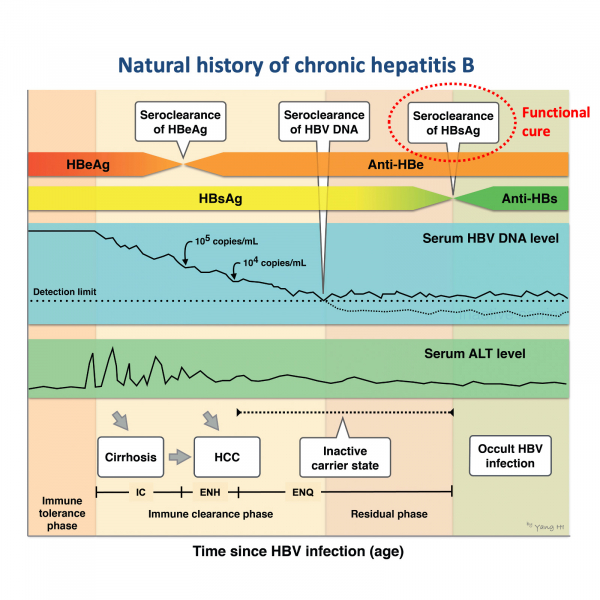Background: Hepatitis B surface antigen (HBsAg) seroclearance is the most important milestone indicating favourable clinical outcomes in patients with chronic hepatitis B (CHB). However, it is difficult to achieve due to the impaired HBV-specific immunity, such as programmed cell death 1 (PD-1)-associated T cell exhaustion. We assessed soluble PD-1 (sPD-1) as a novel seromarker for predicting spontaneous HBsAg loss.
Methods: Serial serum levels of sPD-1 were evaluated in 1046 untreated hepatitis B e antigen (HBeAg)-seronegative individuals who had achieved undetectable serum HBV DNA. Multiple regression analyses were applied to assess associations among baseline and subsequent sPD-1 levels, HBsAg decline during follow-up, and spontaneous HBsAg seroclearance.
Results: A total of 390 individuals achieved spontaneous HBsAg seroclearance during 6464.4 person-years of follow-up. Baseline sPD-1 levels were inversely associated with baseline HBsAg levels (qHBsAg) as well as a greater decline in qHBsAg during follow-up. Incidence rates of HBsAg seroclearance were 11.5, 61.7, 96.7 and 151.0 per 1000 person-years for sPD-1 levels of ≥4000, 536-3999, 125-535 and <125 pg/mL, respectively (Ptrend < 0.0001). Compared with baseline sPD-1 levels ≥4000 pg/mL, the rate ratio (95% CI) of HBsAg seroclearance was 2.1 (1.1-3.9), 3.0 (1.6-5.5) and 5.1 (2.8-9.5), for baseline sPD-1 levels of 536-3999, 125-535 and <125 pg/mL, respectively, after adjustment for sex, age and serum alanine aminotransferase and HBsAg levels.
Conclusion: sPD-1 level is a novel marker which independently predicts spontaneous HBsAg seroclearance of HBeAg-negative inactive CHB patients with undetectable HBV DNA. (word count: 234, <250).
